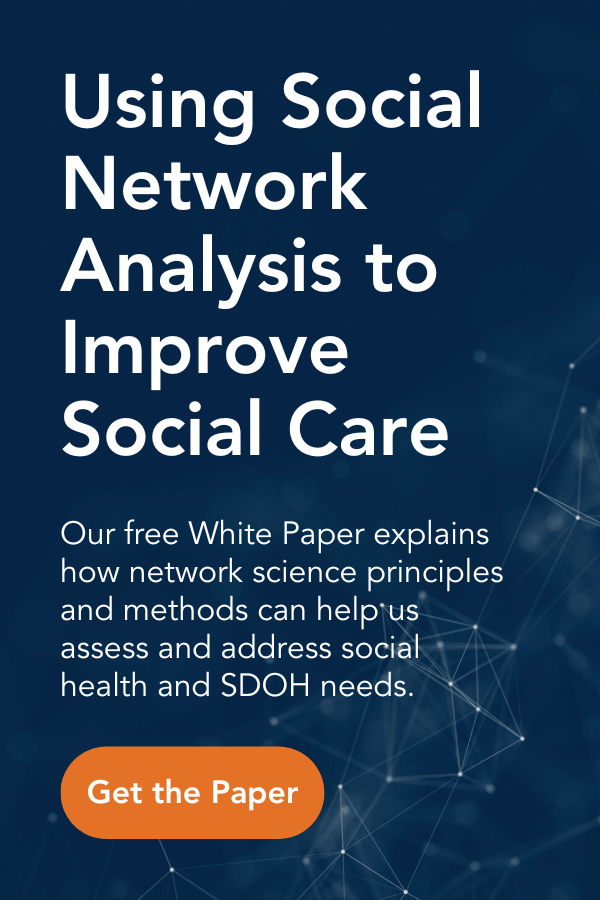
SDOH Screening Tools: 5 Key Factors to Consider
The importance of the social determinants of health is becoming more and more well-known among healthcare providers and practitioners. By helping patients meet their social needs like housing, transportation, food security and education, research suggests we can improve their overall health and well-being in ways medical care alone cannot. However there are many things to consider when researching the many SDOH screening tools available today on the market. Here are five of the most important factors to consider regarding SDOH screening tools.
1) Using a Self-Administered Exam
Many providers and practitioners already screen patients in various areas, often in an interview-style process where the nurse or medical assistant asks questions and records the patient’s answers. While this often works for non-controversial issues or questions, things get a bit more complicated when it comes to the social determinants of health. Many questions on this topic can induce feelings of shame or guilt, introducing bias into a patient’s responses and making their SDOH data less accurate. Using a self-administered exam so they can complete their own responses significantly reduces this risk. While an interview is better than nothing at all, ideal SDOH screening tools use a self-administered exam.
2) Paper vs Digital Screening Methods
It’s also important to think about whether you use a paper screening method or something electronic or digital. Paper screening poses numerous difficulties: It requires data entry after the screening process to enter information in your EHR. Digital methods not only eliminate this major step, but also provide greater patient engagement, allow instant notification and alert systems for high priority social needs, and greater accessibility. For example, electronic SDOH screening tools can offer the survey in multiple languages, an audio format, and allow those with poor eyesight to zoom in.

3) Crosswalking Your Data Collection
Most care providers are already conducting several screenings with patients, including both generic screenings for all patients and more specific ones for sub-groups. Before you add another screening process, it’s key to consider all the different questions you are asking patients to avoid collecting the same information twice. This wastes precious time and also decreases patient engagement. Make sure you identify where you’re collecting SDOH information already, so you don’t risk asking it again.
4) When to Screen Patients for the SDOH
The timing component to SDOH screening tools is critical, as a patient visit is already short with numerous pressing demands. There are multiple ways to approach this issue, depending on the specifics of your practice. Start by looking for unused time within the visit, like time spent in the waiting room, to conduct the screening. Alternatively, you can try to collect this information before the patient arrives using an online survey sent to them beforehand.
Additionally you should think about how often you need to screen patients for their social needs. Some clinics, especially those serving populations known to have a high-level of social need, prefer to conduct these screenings at every visit to identify new social needs and gauge if past resource referrals are working. Alternatively you can screen the patient less frequently – the key is to start somewhere, evaluate your progress, and adapt accordingly.
5) Building Patient & Staff Engagement
Finally, you need to consider ways to build engagement with both providers and patients. Providers should be included in the planning process from the start to ensure they see the value in SDOH screening tools. Patients also must be engaged in the process or they won’t follow up with resource referrals. One recent study found that less than half of patients who go through SDOH screening and resource referral processes actually remembered it just one month later. Taking a strength-based approach with your patient, acknowledging the ways they are working to support themselves and get help, before you provide additional support, builds trust with patients to increase their engagement without overwhelming them in the process.

Collect SDOH Data with PARTNERme, A Person-Centered Network Tool
We have been studying the link between patient health and social connectedness for many years. Using our lens as network scientists, we’ve created PARTNERme, a SDOH screening tool that uses social network analysis to measure a patient’s social connectedness as well. By integrating this data, we can help pinpoint a patient’s most pressing need that isn’t met within their social support network. The tool is digital and designed to be used by the patient themselves in a variety of settings, including the clinic waiting room or at home before the patient arrives. If you’d like to learn more about PARTNERme, contact our team to setup an intro call.
SDOH Screening Tools: 5 Factors You Should Consider
These five key considerations are just the tip of the iceberg when it comes to SDOH screening tools. This Brief from The Center for Child Health Policy and Advocacy is another great resources for working through all these decisions and picking the right option for your clinic. However, don’t let these factors overwhelm you or keep you from getting started. Any kind of social determinant of health screening process is better than nothing, and will create a baseline for you to track and evaluate your process as you move forward.
|
|
Thank you for Signing Up |

More Social Care Resources




